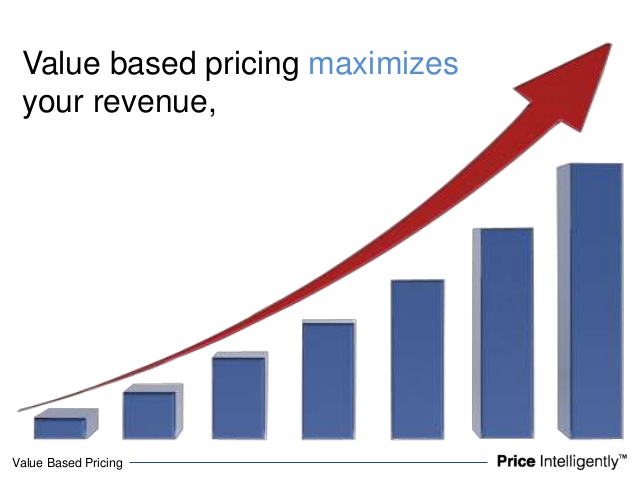
How to apply a pricing policy based on the value of the product?
One of the most pressing problems that companies face now is the “price war” in which they are immersed, even in those sectors where the market perceives differences “value” products.
This situation erodes the benefit of a company directly. If we lower the price of our products or services, and we want to maintain the same gross margin, we will increase our sales. Therefore enter the price war, when consumption is not growing or declining, it will affect our profitability very negative way.
Mohanbir Sawhney, professor and director of the Center for Research in Technology & Innovation at the Kellogg School of Management , says “the value for customers of a product or service is the perceived usefulness of all benefits received by a customer in exchange for the cost total bid, taking into consideration other offers and competitive prices.”
 That consumers are willing to buy a product based on the “perceived value” it is something they know many companies. A good example is Apple. If we review the history of the prices of their products, we can deduce that its pricing policy is the “no drop” of these. Policy that collation of data, they work very well. The iPhone 6 has broken all records with 10 million sales in a single weekend, surpassing all expectations, including those of Apple itself. This would not have been possible if consumers did not perceive the “value” of the products of the apple company. Therefore, a way to set our prices is to analyze what is the “perceived value” of our product / service for our customer.
That consumers are willing to buy a product based on the “perceived value” it is something they know many companies. A good example is Apple. If we review the history of the prices of their products, we can deduce that its pricing policy is the “no drop” of these. Policy that collation of data, they work very well. The iPhone 6 has broken all records with 10 million sales in a single weekend, surpassing all expectations, including those of Apple itself. This would not have been possible if consumers did not perceive the “value” of the products of the apple company. Therefore, a way to set our prices is to analyze what is the “perceived value” of our product / service for our customer.
And how can we calculate what should be the price of our products taking into account the variable “perceived value”? Large consulting firms like BCG, McKinsey, Simon-Kucher, etc … offer tools to calculate and set the price based on this “value”.
These tools, primarily, among other factors are based on analyzing what KBF (Key Buying Factors) for which consumers buy a certain products are. I.e., knowing what motivates them to buy a certain product and not another. In addition, with these tools, we can see how our products and those of competitors meet those KBF. Based on this “satisfaction” that would give us the “perceived value” would set the price, although there are other variables that we can then adjust the price calculated, for example, the market strategy that we implemented in our company.
The analysis of KBF and how are satisfied both by our competitors and us, it is based on a qualitative market research and quantitative. It is advisable to resort to a Market Research Agency that guarantees the representativeness of the data.
What if we do not have budget to hire an outside agency?
In this case, it is important that we try to understand what attributes make our customers buy products from our category and how we meet these with our offer. Thus, we can see the “perceived value” and set a price to match. A simple system of obtaining these data is interviewing both our customers as well as the competition to know what are the key factors that make them use some products or others are considering product attributes and other factors such as service, brand, technical support, customer service, quality perception, etc .. Only then can determine the “value” that we offer to the market.
In conclusion, include the variable “value” for price calculation will always be interesting, but we do so based on extensive studies to ensure we have the necessary data to make the right decision.
And you, do you think it is interesting to apply a pricing policy based on the value of the product?
Leave a reply